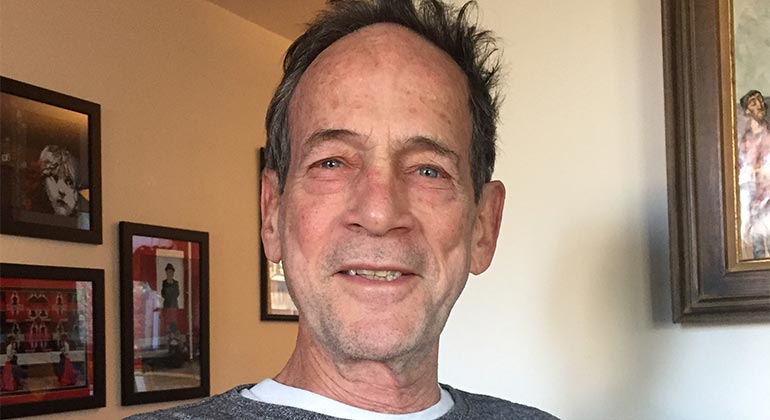
Mount Sinai Brain Surgeon Removes a Cavernous Malformation to Stop Patient’s Seizures
In 2018, when Alan Feigenberg turned 74, he started to experience some unusual symptoms. He had minor memory lapses and mental challenges and was uncharacteristically short tempered. His wife described him as curt and impatient. Occasionally, he would “space out” or stare, and not remember what he had been doing; this was followed by a strange taste in his mouth and a sense that his mind was fading. He also had episodes of walking oddly, which were videotaped Mr. Feigenberg’s wife was concerned and encouraged him to see a gerontologist.
When Mr. Feigenberg discussed his symptoms with Su S. Aung, MD, a geriatrician at Mount Sinai Union Square, she immediately picked up on the staring, spacing out, and memory issues. Dr. Aung thought it might be epilepsy and referred Mr. Feigenberg to Madeline Fields, MD, co-director of the Epilepsy Program at Mount Sinai.
Other than these symptoms, Mr. Feigenberg was in excellent health. He was working full time as an architecture professor at the City College of New York and swimming laps nearly every day.
Dr. Fields ordered diagnostic tests. A standard electroencephalography (EEG) indicated that the brain waves on the left side of the brain were moving slower than they should be. A magnetic resonance imaging scan (MRI) revealed a very large cavernous malformation—a cluster of abnormal blood vessels—on the left side of Mr. Feigenberg’s brain. And a more extensive EEG, conducted overnight, showed small seizures in that same area of the brain. While the diagnosis was concerning, Mr. Feigenberg was relieved to learn he didn’t have cancer.
Cavernous malformations typically affect the brain and don’t always cause symptoms. Usually present before birth, they grow slowly and bleed periodically. Significant bleeding can lead to severe neurological deficits or even death. Mr. Feigenberg’s malformation was so large that, in addition to bleeding, it was putting pressure on the surrounding tissue and pushing his brain slightly to the left. This lesion was causing the seizures. It was also blocking the cerebral spinal fluid from circulating to keep the brain and spine healthy. “It’s amazing he was able to perform as incredibly well as he was,” Dr. Fields says.
Dr. Fields initially prescribed anti-seizure medications, but Mr. Feigenberg experienced side effects. Due to concerns about bleeding and the sheer size of the cavernous malformation, she referred Mr. Feigenberg to neurosurgeon Saadi Ghatan, MD, Chair of Neurosurgery at Mount Sinai West and Mount Sinai Morningside. Dr. Ghatan recommended a resection procedure to remove the cavernous malformation, which would also help the cerebral spinal fluid circulate and remove the pressure on the temporal lobe of his brain.
Mr. Feigenberg was nervous about brain surgery, particularly as it was near the parts of the brain that control memory and speech functions. However, he met with Dr. Ghatan and says he was reassured by the physician’s honest and humane explanation of his condition. Dr. Ghatan removed the cavernous malformation in February 2019. After the procedure, Mr. Feigenberg felt better physically and says his personality also significantly improved. His wife agreed, and told Dr. Ghatan, “Thank you for giving his life back.”
Since the successful procedure, Mr. Feigenberg has been taking a low dose of anti-seizure medication. He has had several follow-up EEGs, which show he’s had no more seizures. He also hasn’t experienced any symptoms. Mr. Feigenberg is glad he had the surgery, despite his initial reservations. “Fundamentally,” he says, “it can really change your life for the better.”